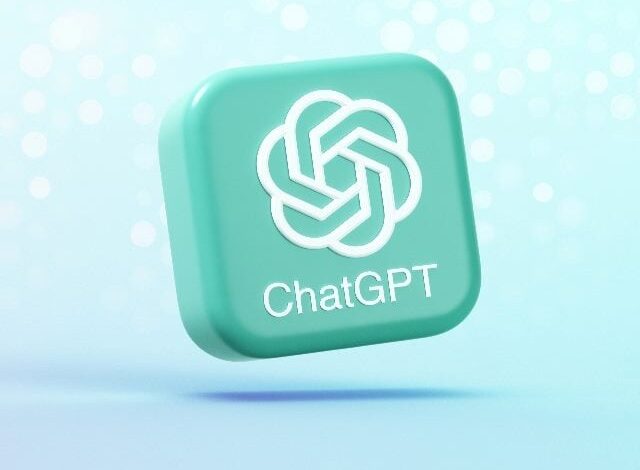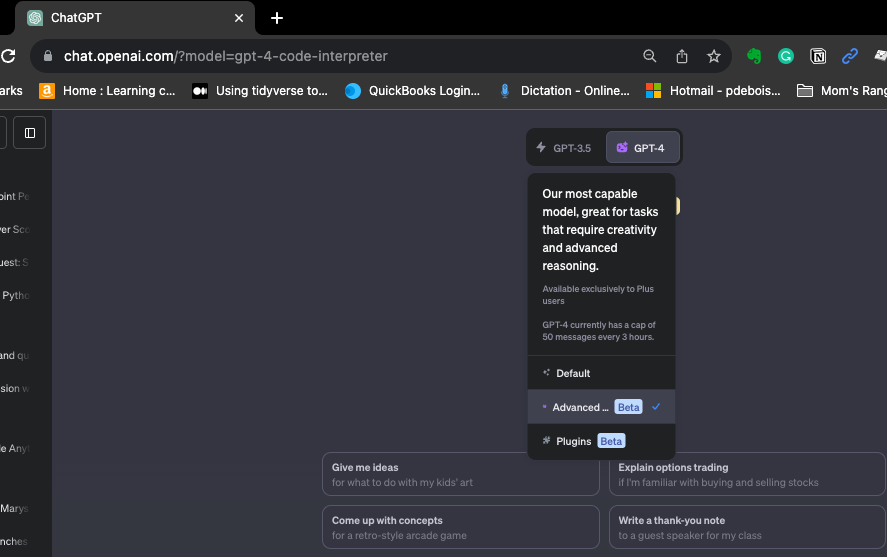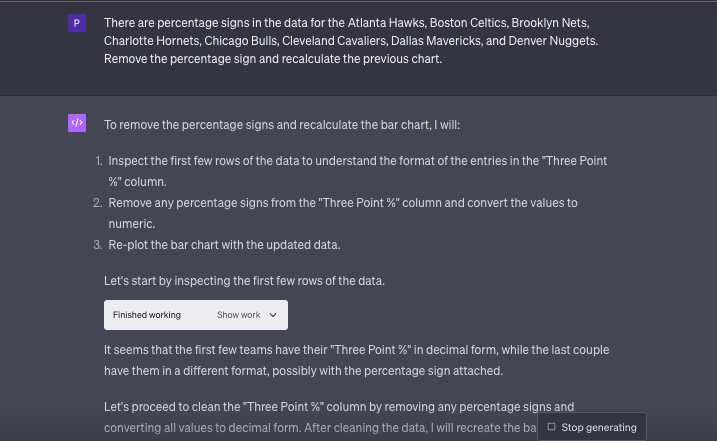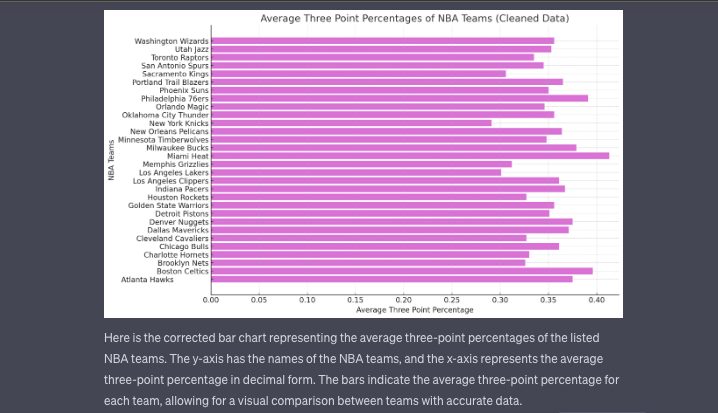Get Ahead with ChatGPT’s New Data Analysis Plugin

The Gist
- New capabilities. ChatGPT Advanced Data Analysis empowers users to conduct in-depth data analysis without coding expertise.
- Subscription hurdle. Access to the powerful plugin is gated behind a ChatGPT Plus subscription fee.
- Competitive edge. Compared to Google’s Bard, ChatGPT’s plugin offers specialized features but requires a subscription.
When ChatGPT was first introduced, professionals from every industry were intrigued and mesmerized by AI’s potential
Save for data analysts.
Many developers working with data were impressed, but analysts remained somewhat skeptical. Generative AI provides answers that are not deterministic and can sometimes produce inconsistent information for use cases involving data models and programming syntax.
New features have quickly been introduced to help ChatGPT meet programming and data analysis needs more effectively. The most noteworthy is Code Interpreter, a software plugin that allows ChatGPT Plus users to run programs and conduct exploratory data analysis. The impact on analytics has been so significant that OpenAI rebranded the plugin as ChatGPT Advanced Data Analysis to better reflect its capabilities.
Related Article: Microsoft’s Integration of Python in Excel Revolutionizes Data Analytics
How the ChatGPT Advanced Data Analysis Plugin Works
Initiating the Advanced Data Analysis plugin is straightforward — it isn’t activated by default when you first open your ChatGPT Plus account. To access the plugin, ChatGPT Plus users log into their account, navigate to the settings page and select “Beta.” Advanced Data Analysis appears as one of the Beta menu options. Users then toggle the switch to activate the plugin. One caveat: Make sure the interface is set to “advanced” under GPT-4. To do so, click on the GPT-4 button and select “Advanced” from the menu.

More Advanced Programming Tasks
Advanced Data Analysis allows ChatGPT Plus to perform more advanced programming tasks compared to standard ChatGPT. Users can prompt ChatGPT to run programs in addition to generating syntax as part of its responses. This opens up various possibilities for analyzing data within code, creating charts based on lines of programming, editing files and performing calculations.
File Upload Option
Advanced Data Analysis includes a file upload option, a feature previously unavailable in ChatGPT. The switch for this is located in the prompt window, represented by a plus sign within a circle icon. The plugin supports a wide range of audio, video and image files. It can read files up to 100 megabytes in size, interpret the file format and then deliver a relevant response.
The plugin is especially useful for data journalists and analysts who may need to conduct exploratory data analysis but are not proficient in R, SQL, Python or even Excel. Traditionally, an analyst required programming syntax to first clean the data before developing statistical inferences through regressions, classifications and other advanced analyses.
Data Enhancement Is Faster
Steps to enhance data can now be completed more quickly. The ability to manipulate data using descriptive natural language allows the model to create functions, populate tables and offer additional suggestions. For instance, when I uploaded a spreadsheet of NBA stats that my interns compiled this past summer, I asked ChatGPT to generate a chart ranking teams by their 3-point percentage.
When I saw the result, I noticed that some of the numbers in the bar chart seemed off. Seven of the teams had significantly lower bars than the others, which was clearly an anomaly given that having nearly zero for an average three-point percentage is unlikely for NBA teams. Upon reviewing the uploaded spreadsheet, I found that a few rows contained percentage signs. I asked ChatGPT to correct the error. It recalculated the values and generated a new bar chart with accurate numbers, explaining its steps in a follow-up response to the initial prompt.


Highly Relevant Adjustments
ChatGPT has always had the capability to generate code syntax in its responses, but Advanced Data Analysis introduces an impressive ability to make highly relevant adjustments to results, rather than simply providing code for exploration. What’s most striking is that little to no syntax is needed for these adjustments.
Similar Function to IDE Software
This positions ChatGPT Plus to function similarly to an Integrated Development Environment (IDE) software, such as RStudio or Microsoft Visual Studio Code. IDEs are specialized software platforms that provide a programming environment for creating software, websites and apps, complete with appropriate libraries and plugins. Interestingly, Visual Studio Code even offers a plugin that integrates an AI assistant, GitHub Copilot.
Some Limitations
Advanced Data Analysis does have limitations in certain scenarios. While ChatGPT allows you to run code, it operates in an environment devoid of additional libraries and plugins commonly found in production versions of code. As a result, code that is technically functional within ChatGPT may require adjustments for real-world application.
Relies on Older Version of Python
Advanced Data Analysis relies on an older version of Python, 3.8, for data analysis, which means you may not have access to faster Python versions or libraries that leverage the latest features. Consequently, you could be working without the benefits of the most recent libraries or updates.
AI is designed to be directional, despite its highly trained model. Therefore, verifying code suggestions in a test environment that accurately represents where the code will actually run is essential.
Finally, only ChatGPT Plus offers the plugin, so a subscription fee is required for access.
Related Article: ChatGPT Enterprise Unveiled: OpenAI’s Latest AI Power Play
How ChatGPT Advanced Data Analysis Compares to Bard
The ChatGPT Advanced Data Analysis plugin is not unique in offering a file-upload feature. Google’s Bard also provides this capability, but as a built-in feature in the prompt window rather than as a subscription-only plugin. Bard’s file-upload feature is available to all users, making it a more accessible option compared to the premium offering of Advanced Data Analysis..
Expands Range of Possible Data Analysis
Uploading data expands the range of possible data analysis. Data exported from platforms like Google Search Console and Google Trends can be quickly explored without the need for extensive syntax. Imagine ChatGPT classifying each keyword query variation using descriptive prompts instead of regular expressions to filter through a dataset.
One of Several AI-Enhanced Added Features
The plugin is among several AI-enhanced features being added to data analysis solutions. ChatGPT’s competitor, Google Bard, can already generate Python code and has an export feature for Google Colab, a programming environment. The latest Bard update adds query access to Google apps like Maps and YouTube. Meanwhile, Google has also introduced Duet AI, an assistant designed for its enterprise cloud solutions such as BigQuery. In addition, standalone tools targeted mainly at developers have been launched online.
Further Enhancements
In the meantime, OpenAI aims to further enhance ChatGPT’s capabilities by introducing the ability to generate images from within the interface, using regular prompts rather than specialized ones. The text-to-image feature is also said to offer improved rendering of human details like hands, a limitation currently present in all AI image generators. This new feature is set to launch in October for ChatGPT Plus users.
Final Thoughts on AI-Based Tools
Marketers should view AI-based tools as more than just task-completers; they should see them as a means to enhance a team’s understanding of data. Crafting AI prompts will require users to accurately describe the type of data and syntax needed. Plugins like ChatGPT Advanced Data Analysis will promote better AI management in campaign creation and data analysis for customer experience initiatives.



